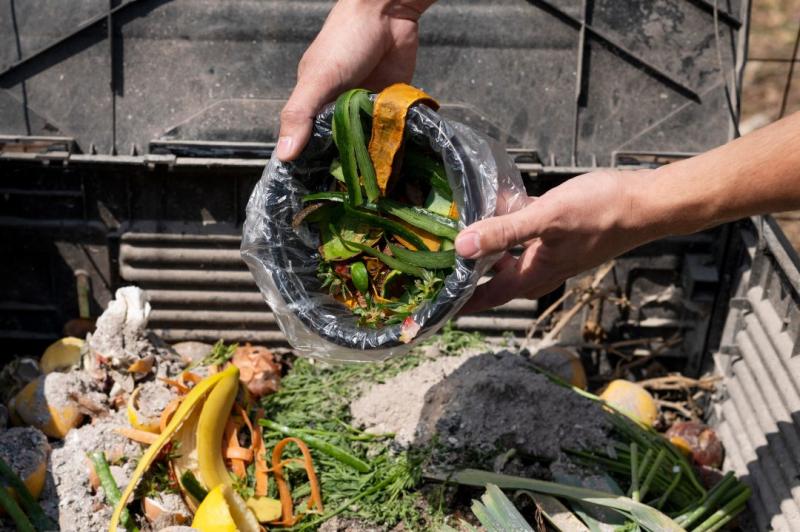Denton makes another move to stop proposed sewage plant for ‘lagoon community’ near Rainbow Valley – KERA News

Report on Proposed Wastewater Treatment Facility in Denton, Texas, and its Implications for Sustainable Development Goals
Executive Summary
The City of Denton has formally contested a permit application for a new wastewater treatment plant proposed for a location near the Rainbow Valley community. The opposition is rooted in significant concerns regarding environmental degradation, public health risks, and non-compliance with regional planning policies. This conflict highlights a critical tension between rapid urban development and the principles of sustainable resource management, directly engaging several United Nations Sustainable Development Goals (SDGs), including SDG 6 (Clean Water and Sanitation), SDG 11 (Sustainable Cities and Communities), SDG 14 (Life Below Water), and SDG 15 (Life on Land).
Project Overview and Permit Application
A permit application was submitted to the Texas Commission on Environmental Quality (TCEQ) by former state Rep. Jim Horn in partnership with developer Megatel Homes. The proposal details the construction of a wastewater treatment plant to support a new mixed-use lagoon community.
- Proposed Discharge: The plant would discharge under 1 million gallons of treated wastewater daily.
- Discharge Location: The effluent would enter a creek that flows through 220 acres of prairie and woodlands in the Rainbow Valley area.
- Regulatory Action: The City of Denton has requested a contested case hearing to prevent permit approval. A public hearing is scheduled by the TCEQ for August 14.
Alignment with Sustainable Development Goal 6: Clean Water and Sanitation
The core of the dispute centers on the protection of water resources, a primary objective of SDG 6. The city argues that the proposed plant, along with other similar applications, poses a direct threat to the achievement of Target 6.3 (improve water quality by reducing pollution) and Target 6.1 (ensure access to safe drinking water).
Key Water Quality Concerns
- Threat to Drinking Water: The cumulative discharge from multiple proposed plants would increase pollutant loads into Lewisville Lake, the primary drinking water source for approximately 3 million people.
- Nutrient Pollution: The permit application lacks a total phosphorus limit, which could lead to eutrophication and degrade the high-quality water in Clear Creek, the Elm Fork of the Trinity River, and Lewisville Lake.
- Chemical Contamination: The city contends the proposed plant is unlikely to adequately treat Per- and Polyfluoroalkyl Substances (PFAS), or “forever chemicals,” which pose a significant public health risk, directly conflicting with SDG 3 (Good Health and Well-being), Target 3.9.
Urban Growth and Sustainable Development Goal 11: Sustainable Cities and Communities
The project is a consequence of rapid population growth in the Denton region. The city’s opposition reflects an effort to ensure that development is managed sustainably, in line with SDG 11. The city’s 2024 Wastewater Master Plan is cited as a strategic tool for managing infrastructure to protect public health and the environment, aligning with Target 11.6 (reduce the adverse per capita environmental impact of cities).
Ecological Impact and Sustainable Development Goals 14 & 15
The proposed discharge path raises concerns about the integrity of local ecosystems, directly relevant to SDG 14 (Life Below Water) and SDG 15 (Life on Land).
Identified Environmental Risks
- Habitat Degradation: The discharge threatens a 220-acre area of prairie and woodlands, as well as a downstream conservation easement, undermining Target 15.1 (conserve and restore terrestrial and freshwater ecosystems) and Target 15.5 (reduce the degradation of natural habitats).
- Impact on Wildlife: Local residents and the city have expressed concern over potential negative impacts on local wildlife due to pollution and altered water flow.
- Aquatic Ecosystem Health: The introduction of pollutants without stringent limits poses a threat to the aquatic life in the receiving creek and the larger Trinity River watershed, contrary to the objectives of Target 14.1 (reduce pollution from land-based activities).
Institutional Processes and Community Engagement (SDG 16)
The city’s challenge to the permit application highlights procedural deficiencies and calls for adherence to institutional frameworks that ensure accountable and inclusive decision-making, as promoted by SDG 16 (Peace, Justice and Strong Institutions).
- Non-Compliance with Regionalization Policy: The applicant allegedly failed to conduct a meaningful inquiry with the cities of Denton and Sanger regarding their capacity to provide wastewater services, as required by TCEQ policy.
- Insufficient Documentation: The application is reported to lack necessary details, including cost analysis and justification for the new facility.
- Inadequate Public Outreach: The city asserts that the applicant failed to conduct sufficient outreach to the 23 nearby landowners and communities, despite the significant public interest in the project.
The mobilization of local property owners, who have organized to attend the public hearing and pursue a contested hearing, demonstrates active community participation in environmental governance, aligning with Target 16.7 (ensure responsive, inclusive, and representative decision-making).
Analysis of Sustainable Development Goals in the Article
1. Which SDGs are addressed or connected to the issues highlighted in the article?
-
SDG 6: Clean Water and Sanitation
- The core issue of the article is the proposed construction of a wastewater treatment plant and its potential to discharge pollutants into a creek that feeds into Lewisville Lake, a major source of drinking water. This directly relates to ensuring the availability and sustainable management of water and sanitation.
-
SDG 11: Sustainable Cities and Communities
- The article discusses the challenges of managing urban expansion, as Denton is experiencing “rapid population growth.” The city’s creation of a “Wastewater Master Plan” and the conflict over infrastructure development (the treatment plant) are central to the theme of making cities inclusive, safe, resilient, and sustainable.
-
SDG 15: Life on Land
- Concerns are raised about the negative environmental impact of the wastewater discharge on “220 acres of prairie and woodlands” and its wildlife. Residents fear the project will “destroy natural habitats,” connecting the issue to the protection and restoration of terrestrial ecosystems.
-
SDG 3: Good Health and Well-being
- The potential contamination of drinking water for approximately 3 million people with pollutants like phosphorus and PFAS (“forever chemicals”) poses a direct threat to public health. The article mentions the city’s master plan aims to “protect public health and safety.”
-
SDG 16: Peace, Justice and Strong Institutions
- The article details the formal process of civic engagement and institutional oversight, including the city requesting a “contested case hearing” with the Texas Commission on Environmental Quality (TCEQ), planned public hearings, and community meetings. This highlights the role of effective and accountable institutions in mediating development and environmental disputes.
2. What specific targets under those SDGs can be identified based on the article’s content?
-
Target 6.3: Improve water quality by reducing pollution
- The entire conflict is centered on this target. The city of Denton opposes the permit for the new wastewater plant because it fears the discharge will add “a significant loading of pollutants” (specifically phosphorus and PFAS) into the water system, thereby degrading water quality in Clear Creek and Lewisville Lake.
-
Target 11.6: Reduce the adverse environmental impact of cities
- The debate over how to manage wastewater from a new housing development is a direct example of addressing the environmental impact of urban growth. The city’s opposition to the proposed plant is an attempt to mitigate the adverse effects of waste management on the local environment.
-
Target 15.5: Take action to reduce the degradation of natural habitats
- The community’s concern that the plant’s discharge would “destroy natural habitats” and bring “pollution to a pristine area” directly aligns with this target, which aims to reduce the degradation of natural ecosystems.
-
Target 3.9: Reduce illnesses from hazardous chemicals and water pollution
- The specific mention of “PFAS and other emerging contaminates” as a concern for the drinking water supply of millions connects directly to this target. The city’s argument is that the proposed plant is not equipped to manage these hazardous chemicals, posing a risk to public health.
-
Target 16.7: Ensure responsive, inclusive, and participatory decision-making
- The article describes the mechanisms for this target in action. The city’s official request for a contested hearing, the planned public hearing by TCEQ, and the community organizing meetings are all examples of stakeholders participating in the decision-making process regarding the plant’s permit.
3. Are there any indicators mentioned or implied in the article that can be used to measure progress towards the identified targets?
-
For Target 6.3 (Improve water quality):
- Volume of wastewater discharged: The article specifies the proposed plant would discharge “less than 1 million gallons of treated wastewater daily.” This is a quantifiable indicator.
- Concentration of pollutants in water: The lack of a “total phosphorus limit” is cited as a major flaw. Measuring the concentration of phosphorus and PFAS in the discharged water would be a direct indicator of water quality. The article also notes that existing PFAS levels in Denton’s water are “below the federal Environmental Protection Agency’s proposed limit,” which serves as a benchmark indicator.
-
For Target 15.5 (Reduce habitat degradation):
- Area of habitat potentially affected: The article identifies the “220 acres of prairie and woodlands” in Rainbow Valley as the ecosystem at risk, providing a spatial indicator for the potential environmental impact.
-
For Target 11.6 (Reduce environmental impact of cities):
- Adoption of integrated policies and plans: The article explicitly mentions Denton’s “new Wastewater Master Plan in 2024” as a planning tool to manage growth and wastewater, serving as an indicator of proactive environmental management by the city.
-
For Target 16.7 (Participatory decision-making):
- Level of public participation: The article implies this indicator by mentioning the various groups involved: the city government, the state agency (TCEQ), the developer, the property owner, and the local community members (“About 40 people met…”). The occurrence of public and contested hearings serves as an indicator of an established process for participation.
4. Summary of SDGs, Targets, and Indicators
| SDGs | Targets | Indicators |
|---|---|---|
| SDG 6: Clean Water and Sanitation | 6.3: By 2030, improve water quality by reducing pollution, eliminating dumping and minimizing release of hazardous chemicals and materials. |
|
| SDG 11: Sustainable Cities and Communities | 11.6: By 2030, reduce the adverse per capita environmental impact of cities, including by paying special attention to… municipal and other waste management. |
|
| SDG 15: Life on Land | 15.5: Take urgent and significant action to reduce the degradation of natural habitats. |
|
| SDG 3: Good Health and Well-being | 3.9: By 2030, substantially reduce the number of deaths and illnesses from hazardous chemicals and air, water and soil pollution and contamination. |
|
| SDG 16: Peace, Justice and Strong Institutions | 16.7: Ensure responsive, inclusive, participatory and representative decision-making at all levels. |
|
Source: keranews.org

What is Your Reaction?
 Like
0
Like
0
 Dislike
0
Dislike
0
 Love
0
Love
0
 Funny
0
Funny
0
 Angry
0
Angry
0
 Sad
0
Sad
0
 Wow
0
Wow
0









































































